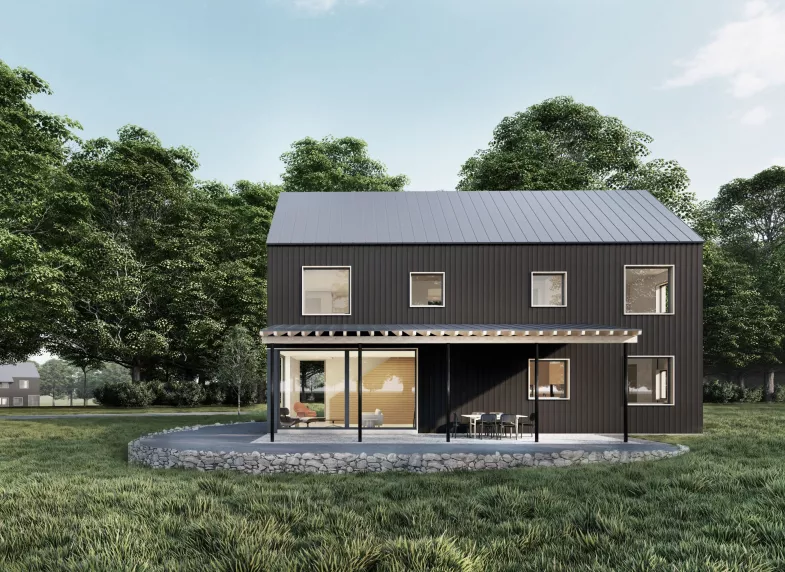Prescriptive Path Resources
Dive into the details by downloading the Prescriptive Path Checklist or get a more in-depth look with our Prescriptive Path 2021 webinar.


Dive into the details by downloading the Prescriptive Path Checklist or get a more in-depth look with our Prescriptive Path 2021 webinar.
In this week’s blog, Phius Project Certification Manager James Ortega outlines the Phius CORE Prescriptive path available for project certification.
Making passive buildings mainstream is one of Phius’ long standing goals, with “Emissions Down, Scale Up” being chosen as our tag-line for 2021. Creating a prescriptive certification standard is a major step in scaling up passive buildings in the single-family sector.
Like most building codes, Phius’ interpretation of prescriptive is that each component piece of a project is designed and built to Phius’ requirements. Phius has general requirements with which all prescriptive path projects must comply. At a high level, these requirements generally fall into the three categories below.
*Phius Prescriptive Path projects must meet ALL requirements in all 3 categories
|
General Scope |
Passive Measures |
Active Measures |
|
|
|
|
|
In addition to the general requirements noted above, Phius has some climate-specific requirements. Unlike most building codes, some of Phius’ climate-specific requirements are more nuanced and vary by city rather than by climate zone. In general, the prescriptive path has climate-specific requirements for the following items:
|
Climate Zone Specific |
City Specific |
|
|
|
|
The largest and most obvious difference between the prescriptive path and Phius’ typical certification path (performance path) is the elimination of energy modeling. While energy modeling has many advantages, there are several disadvantages Phius has attempted to address with the prescriptive path.
|
Energy Modeling Cons |
Prescriptive Path Pros |
|
Expensive
|
|
|
Time intensive
|
|
Reducing cost is an important aspect of the prescriptive path and is reflected in Phius holding a flat fee of $1,000 for projects pursuing this path regardless of project size. This is about half the typical fee charged for performance path projects of the same size and can be accomplished through the simple nature of the checklist noted above.
We’ve baked in the same cost-optimization and energy efficiency logic from the performance path into the prescriptive path requirements. One of the hallmarks of Phius’ certification program is flexibility of design and allowing tradeoffs between different aspects of the building. In an effort to maintain this flexibility without losing simplicity, there are two notable “Performance Tradeoff”’ sections in the prescriptive path that can be helpful if a single item or component on the checklist proves arduous. Those tradeoff items are noted below:
The prerequisite programs (ENERGY STAR, DOE ZERH, EPA Indoor airPLUS) and onsite quality assurance requirements remain the same as the performance path to ensure the building is built as designed.
The simplified experience and cost savings offered by the prescriptive path make Phius certification much more widely attainable. We believe the prescriptive path will be critical to our mission of scaling up passive building in the single-family sector.
There are currently no plans to create a prescriptive path for multifamily or commercial projects. However, we are optimistic that the standard being developed by the ASHRAE 227P Passive Building Design Standard Committee will provide an alternative path for such projects.
For now, we are excited by the prospects of the prescriptive path and look forward to certifying many more prescriptive projects in the coming months.
Top image is of the Basten Farm: FlexHouse III, the first project to be Design Certified using the Phius Prescriptive Path.